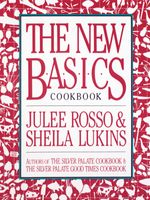Simple and homey or rich and fancy, pie is perfect. We all have childhood memories of walking into Grandmother’s kitchen and smelling her fresh-baked pies. Or at least we wish we did. Of course, the secret to good pie has remained the same since Grandma was a little girl—fresh, fresh fillings and crisp, flaky pastry. Hot or cold, double-crusted or open-faced, brimming with fruit or creamy custard, topped with ice cream or whipped cream, pies are the quintessential American dessert.
Steps to Making Great Crust
Some people take easily to making perfect pie crusts; for others it’s a struggle. But it need not be. The right ingredients, the right utensils, and definitely the right temperature in the kitchen (cool, not hot) all aid in giving you the magic pastry touch.
The kind of fat used in the pastry dough varies the results slightly. Shortening or lard make a pastry that is tender and flaky. Butter and margarine can be combined with either of them for richer flavor and deeper color.
Pastry flour, a soft wheat flour with less gluten than all-purpose or bread flour, makes the tenderest crusts, but since it is not readily available, we use all-purpose flour in ours with delicious results.
Work on a cool surface in a cool kitchen.
Make sure all your ingredients are very cold—fat chilled and water iced. The fat and flour should form little nuggets before the water is added for a flaky crust.
Quickly work the flour and fat together with a pastry blender, two knives, or your fingertips until the mixture resembles coarse crumbs and remains light and dry. Mixing longer will produce a mealy, tough crust.
Stir in ice water one tablespoon at a time until the dough holds together. If too much water is added, the dough will be sticky and the crust tough.
Remember, the more you handle the dough the tougher it becomes, so if you use your fingertips to blend it, work quickly.
When the dough is mixed, quickly gather it into a rough ball, wrap it, and refrigerate 30 minutes to an hour before rolling it out.
Marble is the ideal surface for rolling out pie dough because it remains cool. A wooden table or Formica countertop will also do. Lightly flour the surface and the top of the dough. Rub a bit of flour over the rolling pin. Flatten the dough into a disk and roll lightly from the center to the edge. Lift and turn the dough while rolling, sprinkling lightly with flour if needed. Roll until the dough is about ⅛ inch thick and 1½ to 2 inches larger than the pie plate. If any patching is necessary, lightly moisten the edge of the patch and the hole with water and gently press into place.
For a double-crust pie, fit the bottom crust carefully into the pie plate, add the filling, and cover with the top crust. Moisten the crusts where they meet with water, then turn the top crust under the bottom and flute the edge. Cut a few slits in the top to allow the steam to escape.
Leave the top crust plain or glaze it for a different effect:
Brush lightly with milk or cream for a nice finish.
Sprinkle the crust with sugar. Some will melt and some will remain crunchy.
Brush with an egg wash (egg mixed with a little water or milk) for rich color and shine.
For some pies, the crust is partially or completely baked before the filling is added. It’s important to get the bottom crust into the pie plate or tart pan without stretching it or it will shrink when it’s baked. Decoratively flute the edge and prick the bottom with a fork to keep the dough from puffing. Cover the pastry with aluminum foil and weight it down with pie weights or a generous handful of dried beans. Then bake it in a preheated oven for the amount of time noted in the recipe.

